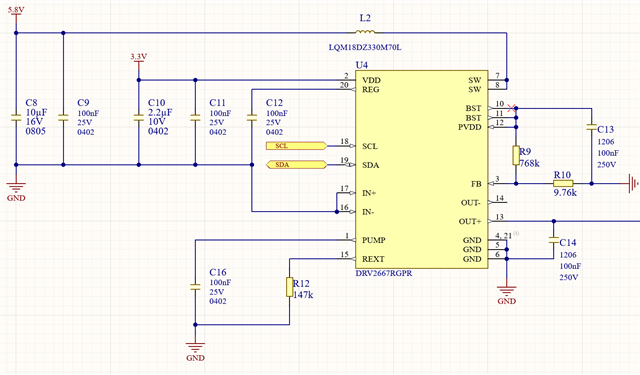Tool/software:
I have trouble getting the boost converter running on the DRV2667.
What I have verified, is:
* The I2C interface is working (reading/writing registers and memory)
* Vreg = 1.8V is ok.
* Vpump = 7.6V should be ok (the datasheet does not specify this voltage).
* Vrext = 1.3V is ok.
* Vbst = Vin = 5.8V
* Using a scope, no switching action is observed on the SW, BST or PVDD nodes.
The powerup sequence as been followed (Reset => Out of standby => Setup => Writing FIFO).
Reading back the registers, the status/config is:
0x00: Status = 0x00
0x01: Config = 0x3a = 111010b: Digital input + Gain 2.
0x02: Config = 0x0e = 1110b: Timeout 3 + EN_OVERRIDE
Data is being written 16 bytes at a time, no delay in between.
The I2C frequency is 40 kHz.


